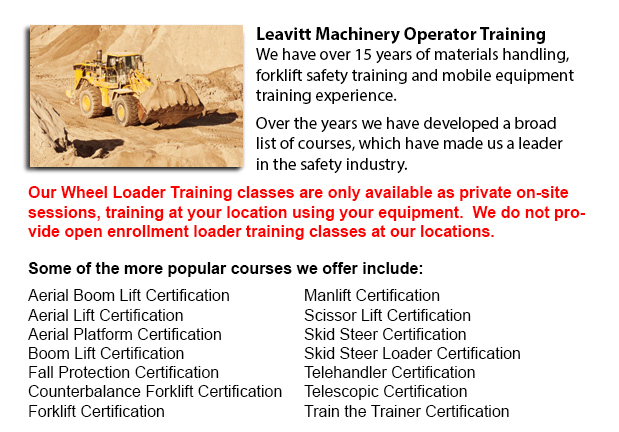
Forklifts are available in a wide range of load capacities and a variety of units. Most lift trucks in a typical warehouse setting have load capacities between one to five tons. Larger scale models are used for heavier loads, like loading shipping containers, could have up to 50 tons lift capacity.
The operator can utilize a control to raise and lower the forks, which are likewise known as "forks or tines." The operator can even tilt the mast in order to compensate for a heavy load's propensity to tilt the blades downward to the ground. Tilt provides an ability to function on rough surface as well. There are yearly contests for skilled forklift operators to compete in timed challenges as well as obstacle courses at regional forklift rodeo events.
General utilization
All forklifts are rated for safety. There is a particular load maximum and a specified forward center of gravity. This essential info is supplied by the maker and placed on the nameplate. It is vital loads do not go over these details. It is against the law in numerous jurisdictions to tamper with or take out the nameplate without obtaining consent from the forklift manufacturer.
Most forklifts have rear-wheel steering so as to improve maneuverability within tight cornering situations and confined areas. This type of steering varies from a drivers' initial experience along with different vehicles. For the reason that there is no caster action while steering, it is no needed to use steering force in order to maintain a constant rate of turn.
One more unique characteristic common with forklift use is unsteadiness. A continuous change in center of gravity takes place between the load and the lift truck and they should be considered a unit during utilization. A lift truck with a raised load has centrifugal and gravitational forces which may converge to result in a disastrous tipping accident. So as to prevent this from happening, a forklift must never negotiate a turn at speed with its load raised.
Forklifts are carefully built with a particular load limit meant for the tines with the limit lessening with undercutting of the load. This means that the load does not butt against the fork "L" and will lessen with the rise of the fork. Generally, a loading plate to consult for loading reference is placed on the lift truck. It is unsafe to use a lift truck as a personnel lift without first fitting it with certain safety equipment like for instance a "cherry picker" or "cage."
Lift truck utilize in distribution centers and warehouses
Essential for any distribution center or warehouse, the forklift has to have a safe surroundings in which to accommodate their efficient and safe movement. With Drive-In/Drive-Thru Racking, a forklift needs to go inside a storage bay which is multiple pallet positions deep to set down or take a pallet. Operators are usually guided into the bay through rails on the floor and the pallet is positioned on cantilevered arms or rails. These tight manoeuvres require well-trained operators to be able to carry out the job safely and efficiently. In view of the fact that each pallet needs the truck to go into the storage structure, damage done here is more frequent than with other kinds of storage. Whenever designing a drive-in system, considering the measurements of the tine truck, along with overall width and mast width, must be well thought out to be able to guarantee all aspects of a safe and effective storage facility.
-
Forklift Certification Courses Avondale
Forklift Certification Courses Avondale - Forklift certification courses really help to be able to make sure that companies using forklifts, follow the local and regional rules. The drivers of the forklift need to go through forklift certification pr... More -
Manlift Certification Avondale
Manlift Certification Avondale - The Elevated Platforms and Manlifts Certification course helps to provide the required training on the work practices, safe operating procedures, rules and regulations regarding the daily activities for the operators... More -
Manlift Operator Training Avondale
Manlift Operator Training Avondale - The aerial lift or manlift is a specialized type of hydraulic platform that is intended to hoist a person vertically giving it an alternate name of a vertical personnel lift. These machinery are widely used for a... More -
Telescopic Training Avondale
Telescopic Training Avondale - Telescopic Handlers are a type of forklift, normally called telehandlers. This machine has been increasing in popularity because of its greater lift heights and its versatility. It is often preferred over the convention... More -
Heavy Equipment Training Avondale
Heavy Equipment Training Avondale - The two most common types of heavy equipment training are classed into the categories of equipment; equipment that is fashioned with rubber tires or those with tracks. The tracked vehicle are heavy duty equipment l... More -
Aerial Lift Train the Trainer Avondale
Aerial Lift Train the Trainer Avondale - The Aerial Lifts Train the Trainer Certification Program would teach trainers how to efficiently train operators in safe industrial mobile equipment operation. Trainers are provided with in-depth instruction a... More -
Overhead Crane Safety Training Avondale
Overhead Crane Safety Training Avondale - The overhead crane safety training program is meant to equip the operators with the right knowledge and skills in the areas of: crane safety measures, accident avoidance, materials handling, and stock and equ... More -
Heavy Equipment Training Schools Avondale
Heavy Equipment Training Schools Avondale - When choosing an operator training course, there are numerous heavy equipment training schools to select from. In order to ascertain the qualifications you would attain, it is very important to check some a... More

Forklift Training Avondale
TOLL FREE: 1-888-254-6157
Avondale, Arizona
forkliftcertificationavondale.com
Email Us
About Us


